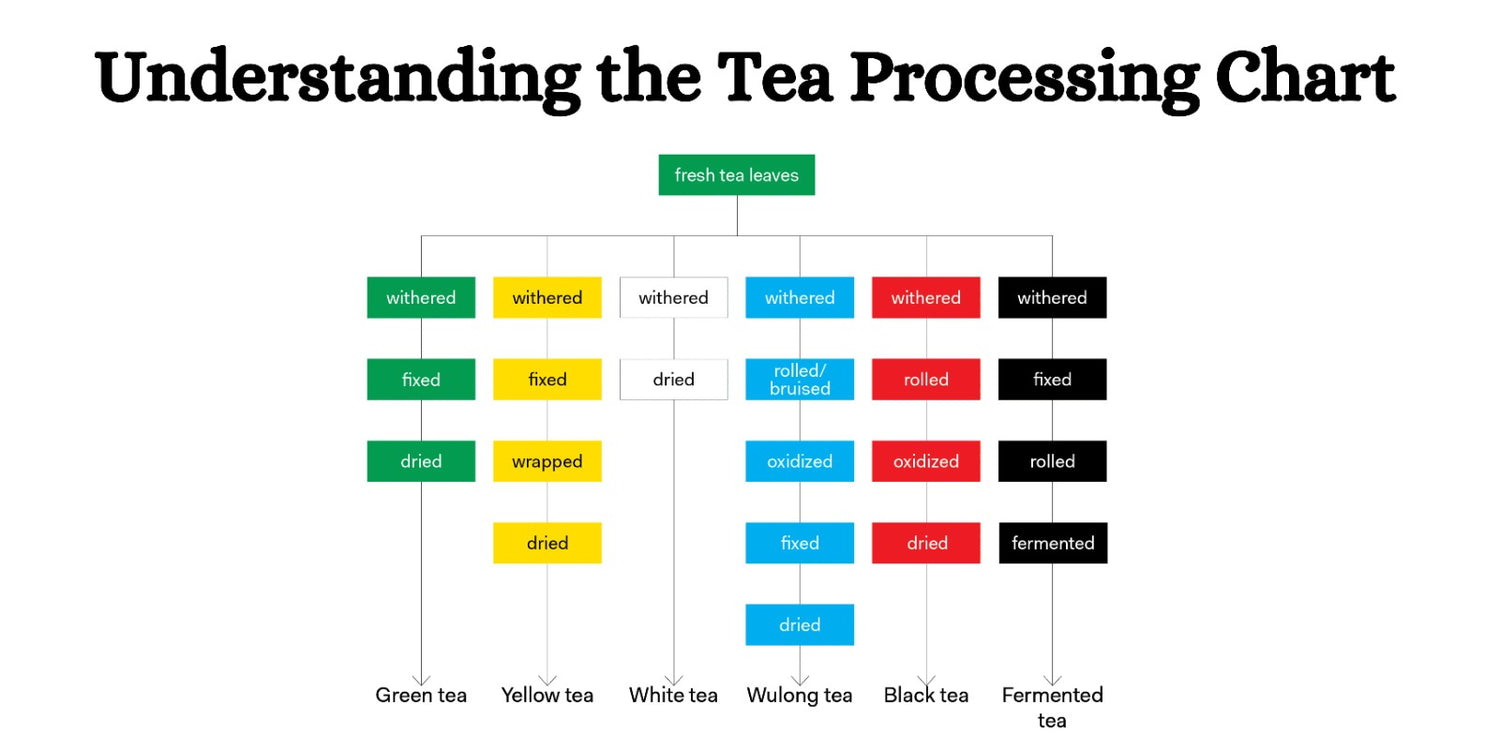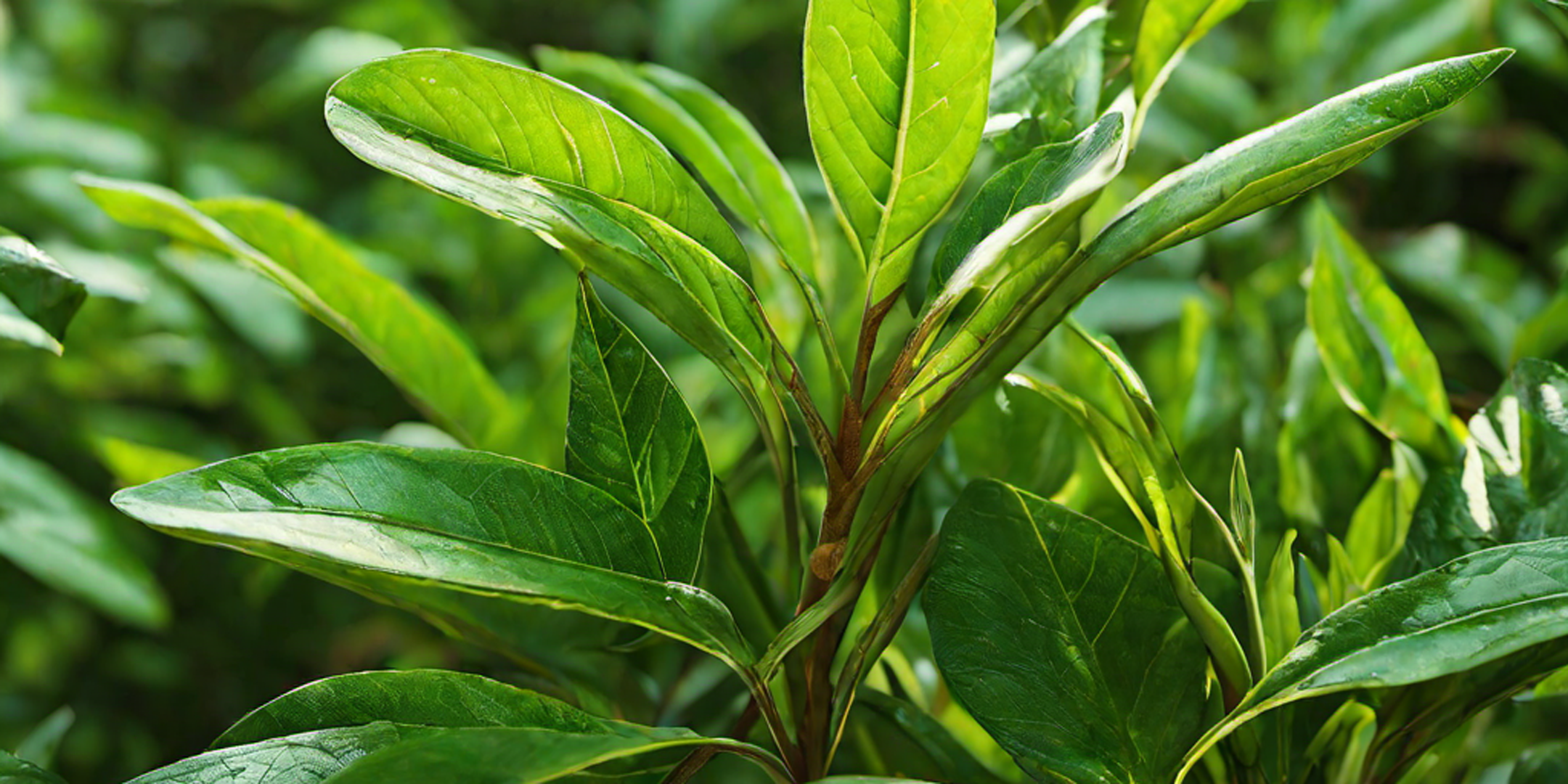Tea, one of the most beloved beverages worldwide, undergoes a fascinating journey from fresh leaves to the comforting brew in your cup. This journey is meticulously mapped out in what is known as a "Tea Processing Chart." In this comprehensive guide, we will explore what a Tea Processing Chart is, its significance, the different stages of tea processing, and how these stages influence the final product. By the end of this exploration, you'll have a deeper understanding of the intricate process that transforms tea leaves into diverse types of tea enjoyed globally.
What Is a Tea Processing Chart?
A Tea Processing Chart is a visual representation that outlines the various steps involved in transforming freshly plucked tea leaves into the final product. This chart is crucial for tea producers, enthusiasts, and connoisseurs as it provides a clear and systematic overview of the tea processing stages. Each type of tea—whether it's green, black, oolong, white, or pu-erh—undergoes specific processes that determine its unique characteristics and flavors.
The Significance of the Tea Processing Chart
The Tea Processing Chart is significant for several reasons:
- Quality Control: It ensures that each step is meticulously followed to maintain the quality and consistency of the tea.
- Education: It serves as an educational tool for those interested in learning about tea production.
- Innovation: It helps tea makers experiment with different processing techniques to create new and unique tea varieties.
The Stages of Tea Processing
The Tea Processing Chart typically includes the following key stages, each contributing to the final flavor, aroma, and appearance of the tea:
1. Plucking
Description: The process begins with the plucking of fresh tea leaves from the tea plant (Camellia sinensis). The quality of the tea depends significantly on the timing and method of plucking. Young, tender leaves and buds are preferred for higher-quality teas.
Significance: The initial quality of the leaves sets the foundation for the entire processing journey.
2. Withering
Description: The freshly plucked leaves are spread out to wither, either under the sun or in a controlled environment. This process reduces the moisture content in the leaves, making them pliable for subsequent processing.
Significance: Withering helps in concentrating the flavors and softening the leaves for further handling.
3. Rolling
Description: The withered leaves are rolled to break the cell walls, which initiates the oxidation process. This can be done manually or using mechanical rollers.
Significance: Rolling releases the essential oils and enhances the flavor profile of the tea.
4. Oxidation
Description: Oxidation is a crucial step where the leaves are exposed to air, allowing them to darken and develop complex flavors. The level of oxidation varies depending on the type of tea being produced:
- Green Tea: Minimal to no oxidation.
- Black Tea: Full oxidation.
- Oolong Tea: Partial oxidation.
- White Tea: Minimal oxidation.
- Pu-erh Tea: Varied oxidation (depending on whether it's raw or aged).
Significance: Oxidation significantly influences the color, flavor, and aroma of the tea.
5. Fixation
Description: Also known as "kill-green," this process involves applying heat to the leaves to halt oxidation. This can be done through pan-firing, steaming, or baking.
Significance: Fixation preserves the desired level of oxidation and locks in the flavors.
6. Drying
Description: The leaves are dried to remove any remaining moisture, ensuring they are shelf-stable. This can be achieved through various methods such as sun-drying, baking, or using hot air.
Significance: Drying prevents spoilage and allows the tea to be stored for extended periods.
7. Sorting and Grading
Description: The dried leaves are sorted and graded based on their size, shape, and quality. This step ensures uniformity and consistency in the final product.
Significance: Sorting and grading determine the market value and quality classification of the tea.
8. Packaging
Description: The final step involves packaging the tea leaves in a way that preserves their freshness and flavor. This can include sealed bags, tins, or vacuum-packed containers.
Significance: Proper packaging protects the tea from environmental factors and extends its shelf life.
How the Tea Processing Chart Influences Different Types of Tea
Green Tea
- Withering: Minimal
- Oxidation: None
- Fixation: Quickly steamed or pan-fired to prevent oxidation
- Flavor Profile: Fresh, grassy, and vegetal
Black Tea
- Withering: Extensive
- Oxidation: Full
- Fixation: None (as oxidation is complete)
- Flavor Profile: Robust, malty, and bold
Oolong Tea
- Withering: Moderate
- Oxidation: Partial (15-85%)
- Fixation: Applied once desired oxidation level is achieved
- Flavor Profile: Floral, fruity, and complex
White Tea
- Withering: Long
- Oxidation: Minimal
- Fixation: Light drying
- Flavor Profile: Delicate, sweet, and light
Pu-erh Tea
- Withering: Moderate
- Oxidation: Varies (raw or aged)
- Fixation: Specific to type
- Flavor Profile: Earthy, rich, and complex
Conclusion: Embracing the Tea Processing Chart
In conclusion, the Tea Processing Chart is an essential tool that maps out the intricate journey of tea leaves from plucking to packaging. This chart not only ensures quality and consistency but also educates and inspires innovation in the world of tea. By understanding the various stages of tea processing, tea enthusiasts can appreciate the complexities and craftsmanship involved in creating their favorite brews.
Embark on your own exploration of the Tea Processing Chart, and let it guide you through the fascinating world of tea, where each step adds a layer of depth and flavor to the final cup. Whether you're a seasoned tea lover or a curious newcomer, this chart will enhance your appreciation for the art and science behind every sip of tea.




